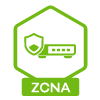USG20W-VPN WAN Port Autonegotiation Bouncing With WISP POE Adapter
Options
Hello All,
I have a USG20W-VPN I'm working on where it is connected to a POE adapter that powers a wireless radio for the WAN connection. This is in a rural area and is traversing a Wireless ISP, so the connection is only a 10 Mbps down/ 10 Mbps up subscription.
Initially, everything was connected and all was good on the first day. It was getting up to 9.5 Mbps or so connection up and down. To limit the uplink, I set the egress limit, after testing, to cap the egress traffic to 9 Mbps to stay below the low points in bandwidth.
Then, the second day the speed starting getting erratic. First it was real slow and then good, then bad. Upon accessing the USG20W-VPN, I noticed the WAN port was bouncing the negotiation with the POE adapter. It was 10 Mbps/full duplex, then 10 Mbps/half duplex, then down, then 10 Mbps full duplex, etc. over a couple of minutes.
I thought this was odd that it didn't just negotiate to 1000 Mbps, which is what the POE adapter has, but played with it for a bit and finally figured out that setting the WAN port manually to 10 Mbps/full duplex seemed to make everything happy.
During my troubleshooting, I did try removing the egress limit to see if the interface would negotiate to 100 Mbps or 1000 Mbps, but it made no difference.
I also engaged the WISP tech support and got their second level to look at it and he was surprised it was negotiating to 10 Mbps as well. They suggested it was the USG20W-VPN doing it because their equipment has a 1000 Mbps interface and they have other customers that negotiate to 100 Mbps or 1000 Mbps with the 10 Mbps, 15 Mbps or 20 Mbps subscriptions.
What I want to know is whether setting the egress limit to 10 Mbps or less caused the USG20W-VPN WAN port to only want to physically negotiate to a 10 Mbps connection even though it and the other physical port are 1000 Mbps interfaces. To me, the physical interface negotiated speed/duplex would be separate from a logical limitation, especially if the connection were asynchronous and the downlink is higher than the uplink.
Any knowledge of this is greatly appreciated.
I have a USG20W-VPN I'm working on where it is connected to a POE adapter that powers a wireless radio for the WAN connection. This is in a rural area and is traversing a Wireless ISP, so the connection is only a 10 Mbps down/ 10 Mbps up subscription.
Initially, everything was connected and all was good on the first day. It was getting up to 9.5 Mbps or so connection up and down. To limit the uplink, I set the egress limit, after testing, to cap the egress traffic to 9 Mbps to stay below the low points in bandwidth.
Then, the second day the speed starting getting erratic. First it was real slow and then good, then bad. Upon accessing the USG20W-VPN, I noticed the WAN port was bouncing the negotiation with the POE adapter. It was 10 Mbps/full duplex, then 10 Mbps/half duplex, then down, then 10 Mbps full duplex, etc. over a couple of minutes.
I thought this was odd that it didn't just negotiate to 1000 Mbps, which is what the POE adapter has, but played with it for a bit and finally figured out that setting the WAN port manually to 10 Mbps/full duplex seemed to make everything happy.
During my troubleshooting, I did try removing the egress limit to see if the interface would negotiate to 100 Mbps or 1000 Mbps, but it made no difference.
I also engaged the WISP tech support and got their second level to look at it and he was surprised it was negotiating to 10 Mbps as well. They suggested it was the USG20W-VPN doing it because their equipment has a 1000 Mbps interface and they have other customers that negotiate to 100 Mbps or 1000 Mbps with the 10 Mbps, 15 Mbps or 20 Mbps subscriptions.
What I want to know is whether setting the egress limit to 10 Mbps or less caused the USG20W-VPN WAN port to only want to physically negotiate to a 10 Mbps connection even though it and the other physical port are 1000 Mbps interfaces. To me, the physical interface negotiated speed/duplex would be separate from a logical limitation, especially if the connection were asynchronous and the downlink is higher than the uplink.
Any knowledge of this is greatly appreciated.
0
Accepted Solution
-
Ingress/Egress bandwidth should not interact with Ethernet speed negotiations. Both settings are "software", but Ingress/Egress bandwith is a bit more far from hardware than setting the ethernet speed.Also... IMVHO a so "erratic" behavior of the ethernet connection may be related to not good-enough ethernet cable as standard, signal isolation/shielding, distance from AC power or even poor plug/socket quality or crimp/install.Many installers like CAT5e unshielded twisted pair cables: it's cheap, softer and allows narrower bends and twists. It's easier to pull through pipes (or counduits? I don't know the tech-term for the plastic pipes used for ducting power and data wires) compared to CAT6 Shielded and Folded Twisted Pairs.Also, the shield is not an issue because you don't have to connect it and verify connection on both sides (and ground it if necessary). But the behavior for data transfer is less stable with EMI, power consumption change, and so on.Also, pre-made patch cables (the one between your POE injector and the USG-20VPN sometimes have even only 4 wires, not 8, and this could lead to a poor 100mbit connection due to missing twisting pairs. Full gigabit needs 8 wires.So... try to change a patch cable or two if you can access to them. And keep tracking of the changes. Take some time for your tests, could lead to more cases and more experience.Hope this helps. Also... if forgot the "obvious": if you negotiate 10MBPS on ethernet connection you can't reach 20mbps connection between your device and the PoE antenna. You need at least 100MBPS of negotiation.1
All Replies
-
Ingress/Egress bandwidth should not interact with Ethernet speed negotiations. Both settings are "software", but Ingress/Egress bandwith is a bit more far from hardware than setting the ethernet speed.Also... IMVHO a so "erratic" behavior of the ethernet connection may be related to not good-enough ethernet cable as standard, signal isolation/shielding, distance from AC power or even poor plug/socket quality or crimp/install.Many installers like CAT5e unshielded twisted pair cables: it's cheap, softer and allows narrower bends and twists. It's easier to pull through pipes (or counduits? I don't know the tech-term for the plastic pipes used for ducting power and data wires) compared to CAT6 Shielded and Folded Twisted Pairs.Also, the shield is not an issue because you don't have to connect it and verify connection on both sides (and ground it if necessary). But the behavior for data transfer is less stable with EMI, power consumption change, and so on.Also, pre-made patch cables (the one between your POE injector and the USG-20VPN sometimes have even only 4 wires, not 8, and this could lead to a poor 100mbit connection due to missing twisting pairs. Full gigabit needs 8 wires.So... try to change a patch cable or two if you can access to them. And keep tracking of the changes. Take some time for your tests, could lead to more cases and more experience.Hope this helps. Also... if forgot the "obvious": if you negotiate 10MBPS on ethernet connection you can't reach 20mbps connection between your device and the PoE antenna. You need at least 100MBPS of negotiation.1
-
Hi @mMontana,
Appreciate the insightful information shared.

ETH ingress/egress work on logic interface. it does have effect for physical link speed negotiation.
Based on our understanding, most link speed/duplex issues are affected by Ethernet cable.
0 -
Thank you mMontana.
That does make sense and aligns with what I thought; just wanted to be sure I wasn't over thinking it.
The WISP is coming back out to replace the shielded RG-?? cable between their POE and the radio on the tower. It was originally made on site by the installer.
The patch cable between the POE and the USG20W-VPN looks factory built. All eight wires are able to be seen in the connector on the patch cable, so I don't believe that would be an issue with only four wires. However, I'll get it changed out as well to be sure.
And, yes, the grey plastic pipe, or metal pipe, is called conduit.
Also, thank you Zyxel_Cooldia for the data.
0 -
Please, keep me posted if you can.
0 -
Yesterday afternoon, the WISP technician came by and checked the equipment and it was only negotiating 10 Mbps for him as well. He started by replacing the cable and adding a Network Interface Device (NID)/lightning suppressor. Once he did that, it negotiated to 1000 Mbps/full duplex as it should. And, I did not change the egress limiting on the WAN connection.
It has been stable since.
Thanks for the help.0
Categories
- All Categories
- 441 Beta Program
- 2.9K Nebula
- 208 Nebula Ideas
- 127 Nebula Status and Incidents
- 6.4K Security
- 528 USG FLEX H Series
- 331 Security Ideas
- 1.7K Switch
- 84 Switch Ideas
- 1.3K Wireless
- 50 Wireless Ideas
- 6.9K Consumer Product
- 292 Service & License
- 462 News and Release
- 90 Security Advisories
- 31 Education Center
- 10 [Campaign] Zyxel Network Detective
- 4.7K FAQ
- 34 Documents
- 86 About Community
- 99 Security Highlight
 Freshman Member
Freshman Member

 Guru Member
Guru Member



 Zyxel Employee
Zyxel Employee




